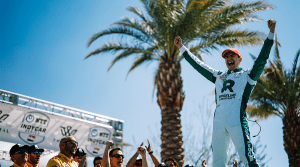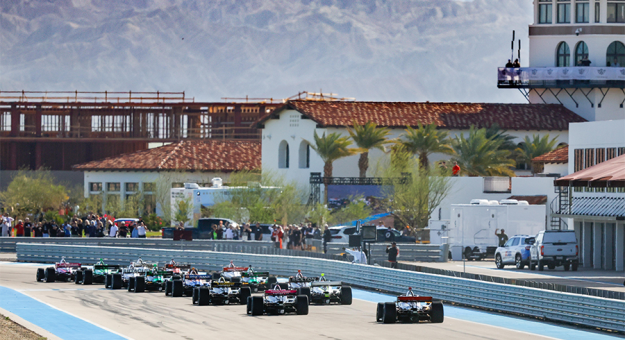My excitement was through the roof for the NTT IndyCar Series’ version of an all-star race.
It had been since 2008 at Surfers Paradise in Australia that there was a non-championship race in the series.
With similar race cars and a lot of cash on the line, my expectation was an all-out brawl for the $500,000 winner’s prize.
To put it lightly, the event at The Thermal Club, located near Palm Springs, Calif., was a major stinker.
Before I get into a laundry list of what went wrong, I’ll start off with what went right, sort of.
What Went Right
• For starters, the fact IndyCar had the ambition to try a new event at a new race track was more than commendable.
With critics and fans harping about wanting something new within the series, an all-star race at a track the series hasn’t raced at before seemed like a brilliant idea on paper.
• Aside from the race itself, the event allowed for teams to have extensive testing prior to qualifying and the race.
Four test sessions were run, giving teams and drivers ample time to not only prepare for the all-star race, but to dial in their road course programs for the remainder of the season.
• The world-class facility of The Thermal Club provided an excellent venue for a normal NTT IndyCar Series race.
From various social media reports, fans who made it out to the luxury club (after paying $500 to get in) were treated to plenty of open space, free food and drinks, and the chance to see the drivers and race cars up close.
What Went Wrong
• Why in the world was the race called the $1 Million Challenge if the winner only bagged half of that?
Up until a week or so before the race, I just assumed it would pay $1 million. However, when the format was released, it came as a shock.
The total payout for the exhibition event was $1.756 million across the 27 competitors, making it the largest purse for an IndyCar race outside of the Indianapolis 500. Those are all major positives.
However, why promote a race as the $1 Million Challenge if the winner only takes home half of that amount? It seemed somewhat misleading.
The NASCAR All-Star Race has paid out $1 million to the winner since 2003, while last year’s Eldora Million at Ohio’s Eldora Speedway paid $1 million to winner Logan Schuchart.
• While The Thermal Club presented a great opportunity for a points-paying IndyCar race, the venue was the worst place to hold an all-star race.

For those looking for tight, side-by-side racing, an oval is the way to go. If strategy is one’s cup of tea, road course racing it is.
The 3.067-mile road course just didn’t allow for many passing opportunities and the format eliminated intriguing strategy.
While Colton Herta taking a Sunday drive at half throttle to save his tires before the halftime break was certainly interesting, he still only managed a fourth-place finish.
• Where was the excitement?
Over the years, I’ve been accustomed to NASCAR’s all-star races where the winner-take-all mentality tends to bring the highest aggression levels out of drivers.
Feeling that intensity through the broadcast only captivates the fan even more. A few classics that come to mind are:
The Winston in 1992 where Kyle Petty and Davey Allison crashed across the start/finish line.
Kyle and Kurt Busch wiping each other out in the 2007 edition of the event, with the two not speaking to each other for months after the race.
Rusty Wallace wrecking Darrell Waltrip in the 1989 edition. ‘Jaws’ became a fan-favorite that day.
Perhaps the most memorable was Dale Earnhardt’s “pass in the grass” to snag the lead away from Bill Elliott in 1987.
The list goes on. Each of those races had excitement and provided memorable moments that will last for generations.
Sunday’s $1 Million Challenge wasn’t memorable in any regard.
Chip Ganassi Racing’s Alex Palou won his heat race and led all 20 laps to win the race. His margin of victory was more than six seconds and he was never challenged, regardless of a halftime break.
If I wanted to watch uncompetitive open-wheel racing catered to the wealthy, I’d watch Formula 1.
To make matters worse, the event, which was supposed to be “made for TV” according to IndyCar’s pre-race press releases, earned an abysmal 816,000 viewers across NBC and streaming platform, Peacock.
The NASCAR Xfinity Series race at Circuit of The Americas in Austin, Texas, a day prior earned 891,000 viewers. Both races were up against the NCAA men’s basketball tournament.
In what world does a NASCAR support series earning more viewers than America’s top open-wheel series sound promising?
Time will tell what IndyCar plans to do regarding future All-Star races, but if Sunday’s event weighed heavily on the chances of another one, I don’t like those odds.
